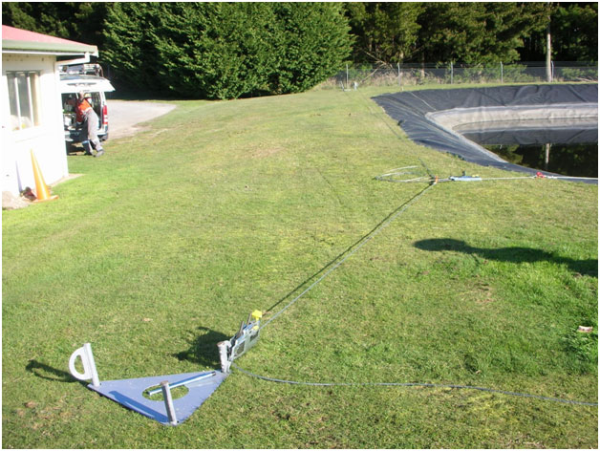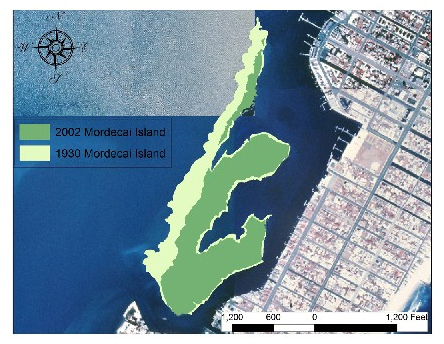Natchez Wastewater Treatment Facility Finds Success with New System
A popular magazine at the SRS Crisafulli offices is Treatment Plant Operator (TPO), which serves municipal water system operators. The November 2011...
1 min read
Elizabeth Kaiser : Thu, Jul 28, 2011 @ 08:07 AM

The propulsion and traverse systems are critically important to the operation of an unmanned, cabled dredge. The FLUMP, SRS Crisafulli's unmanned dredge, propels itself along a traverse cable connected to lateral cables at opposite sides of the lagoon, configured at 90 degrees to the traverse cable.
The FLUMP's drive system is onboard. SRS Crisafulli's FLUMP Specialist, Senior Applications Engineer Eric Lillberg, explains seven ways to secure the lateral traverse cables to land, on opposite sides of the lagoon.
The standard method is to drive three 48" long stakes into a triangular steel base plate on each of the four corners of the lagoon or pond. From the four corners, wire rope winches are connected to each lateral cable, each of which is connected in turn to the traverse cable that runs the length of the lagoon. The corner winches can exert 2,000 lbs. of tension into the cable system.
Normally, this method provides more than adequate results, depending on the length of the traverse cable.

Even at 700 lbs. of tension, however, a base plate can be pulled out of soft ground, which leads us to Method #2, a daisy chain setup with multiple stakes connected by chains or cables.
Method #3: In more permanent installations the use of concrete bollard posts is an economical solution.

Method #4: A motorized trolley system mounted on a steel rail structure. A rail structure with a motorized trolley system is the preferred method for permanent installations. The rail structure adds cost to the system, but can result in a substantial reduction in ongoing operator cost thereby improving the overall return on investment (ROI) from the dredging system. 
Method #5: When the lagoon is surrounded by hard packed or rocky terrain, other methods have been utilized, including large concrete blocks, about 32" x 32" x 64" and weighing approximately 5700 lbs. Depending on the lay of the land, it may take some jockeying to prevent the blocks from sliding, once tension is applied.

Method #6: We have drilled holes in existing rock and concrete structures to set anchors.
Method #7: A not so common, but equally effective approach is to use two motor vehicles, one on each side of the lagoon. Skilled drivers move the two vehicles in perfect parallel, enabling the system to work with no adjustment to the traverse system. 
No matter what the method, a taut cable is essential to effective unmanned dredging.

A popular magazine at the SRS Crisafulli offices is Treatment Plant Operator (TPO), which serves municipal water system operators. The November 2011...

Many situations can complicate a shoreline’s integrity. These can range from flooding, hurricanes and man-made disasters and can even include aquatic...
Energy production and consumption worldwide is influenced by many factors. Resource availability, economic activity, population growth and...